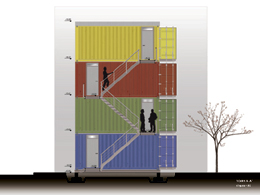STUDENTS PROJECTS
PROJECTS 2011
Student: Perdiki Chrysi
Supervisor: Vasilatos Panagiotis
National Technical University of Athens
Presentation date :1/4/2011
Summary
Used containers that are stranded in ports are been collected and converted with minimal cost to the minimum structural and functional unit of transportable hostels housing immigrants. These blocks of containers are temporarily bound in unused urban spaces.
Detailed description
THE ISSUE OF IMMIGRATION
The countries of southern Europe and Greece, have been the sites of various types of immigration throughout the 20th century. Especially the change after 1989, coinciding with the collapse of the regimes of self-styled socialism, finds the southern European societies and the official policy initially unprepared.
Today more than one in ten residents of Greece are immigrants and about one in two are female, while more than half coming from the neighboring Balkan states. More specifically, census of 2001 recorded 797,091 people, a figure that translates to 7.5% of the total population and 10% in the capital. Despite the high concentrations of immigrants, many non-governmental organizations who care almost entirely on the issues of immigrants, indicates the lack of state mechanism for managing such minority
URBAN ANGLE
Although it is a global phenomenon, immigration can be resolved locally. Regarding the city of Athens, the geographies of settlement of immigrants formed around the center of town, mixing with local households, while the range of gathering are such that no one can not talk about "ghetto." In these areas I focused on my diplomatic work, choosing as a case of study, the 4th Municipal District of Athens, Sepolia.
The main idea is not to burden the urban landscape by a building with a static bulk but to create in the city, through the repetition of a particular pattern, a network of transportable structures with a local area character.
The study firstly began recording all empty lots and heights of buildings in the area. Followed by the selection of unused urban gaps that could accommodate the hostels house of immigrants, as long as ownership allows, or continues as a need in this area.
The standard for selecting land for their place in the urban landscape and the structure of construction chosen are the following:
i. Easy and fast access to mass transportation.
ii. Absorption a purely residential neighborhood.
iii. Expulsion from main roads and commercial routes.
iv. Maximum number of floors neighboring buildings 6.
v. Access by truck for transporting and installing the building
vi. Minimum plot size 8.80 m (face) x 7,50 m (depth).
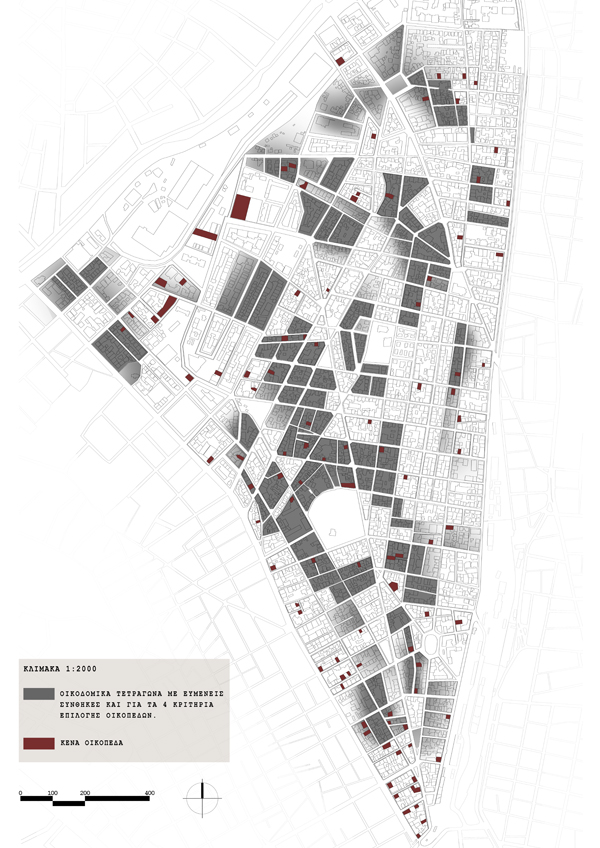
THE ISSUE OF CONSTRUCTION
The minimum structural and functional unit of construction is the used container. Main reasons for choosing it were its dimensions, low cost, the transferability, standardization in production, transportation and stacking, the existence of abundant and disuse in ports throughout Europe, the concept of reusability and aesthetics.
Although the containers were originally designed as containers for transport of goods, also used as spatial units in architecture and is suitable for low cost construction.
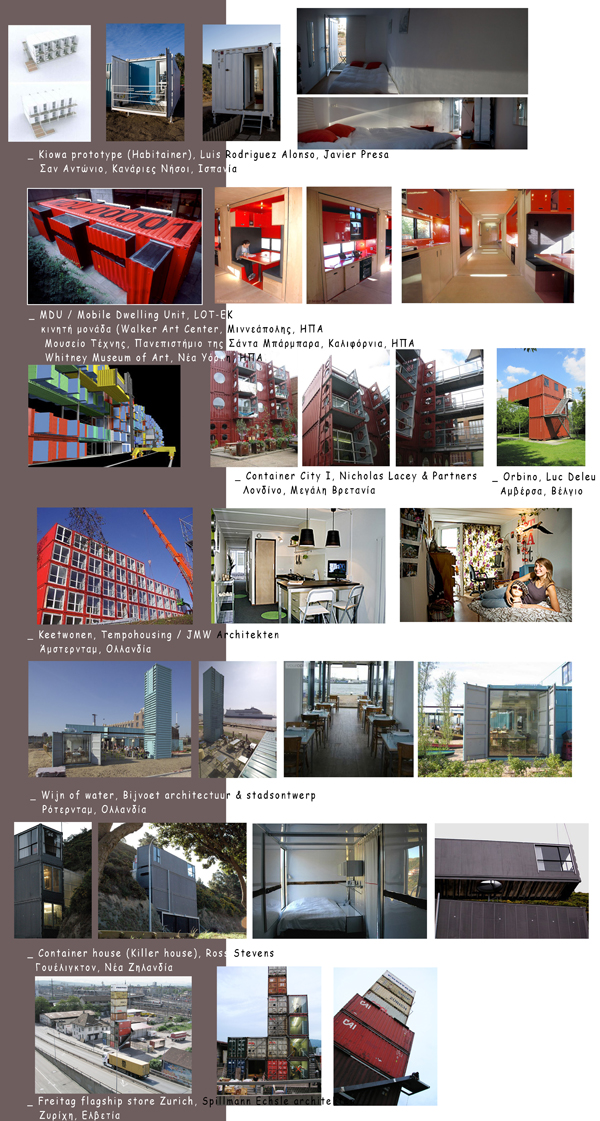
The characteristics of the container
Size
The standardization of container in the 70s, based on ISO standards, was a necessary condition for the upcoming world domination of the containers. Containers have a fixed width of 8 feet (2,438 meters) and a variety of heights and lengths: the standard cube has a height of 8.5 feet (2.6 meters) long by 20 feet (6 meters).
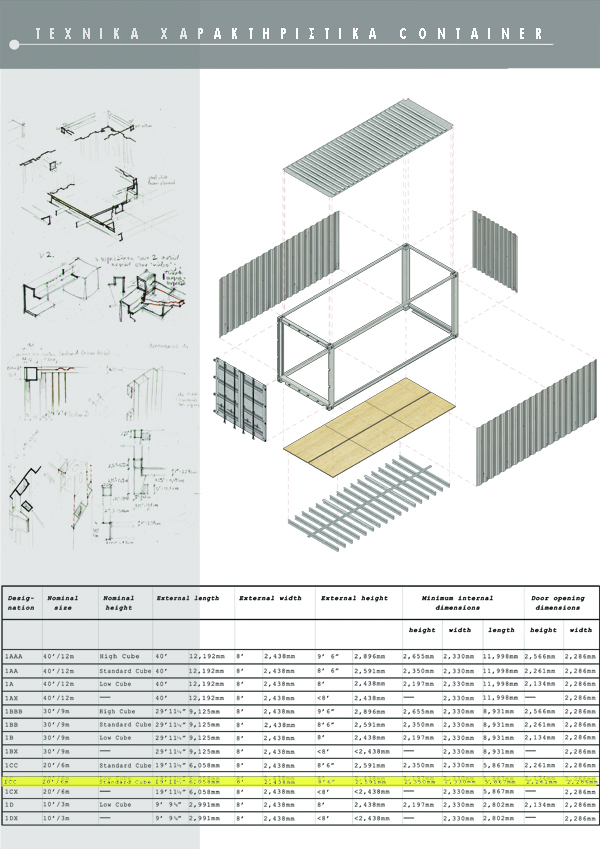
Production
The bulk container made today in Asia and mostly in China, which is consistent with the volume of exportation products in this country. Containers arrive and usually remain in European ports, where costs less to buy a new container for subsequent imports from the East rather than sending the same empty container back for reuse.
Process
Since we buy a container of any controlled damage. Then a side wall is cut to where you installed the door and skylight. Then the container is painted internally and externally. Afterwards, the doors and the windows are been placed (chrysi.2011_4). Then placed inside insulation , Gear Electrical Installation and lining with wooden panels. Placed frames and containers sealed after stored disassembled within the other components of the total (one balcony for each container (chrysi.2011_5) and a shared metal staircase for each building(chrysi.2011_6)) and then the furniture. Six to eight containers transported on a plot which has already been excavated, the placement (metal), foundations and electric connection to the city. Then emptied the inside of containers stacked one on top of another with the specific standard locks on two columns of three or four depending. The stairs and balconies attached to the band. Seal placed to the two top containers. The last task is to assemble furniture, which is done by users themselves.
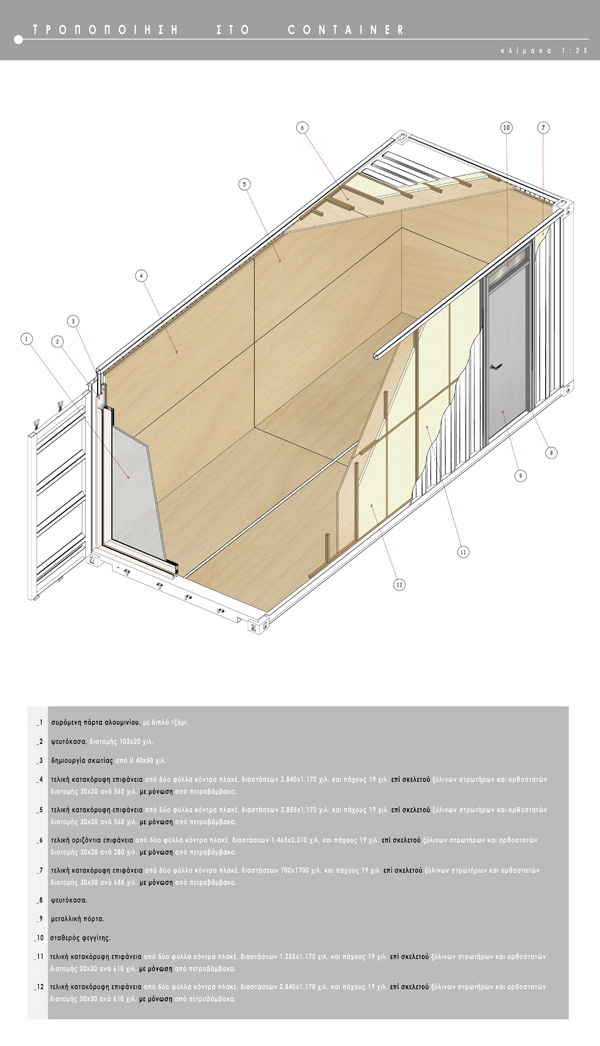
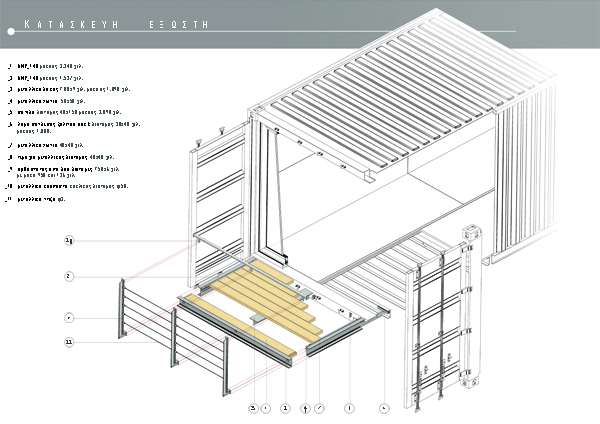
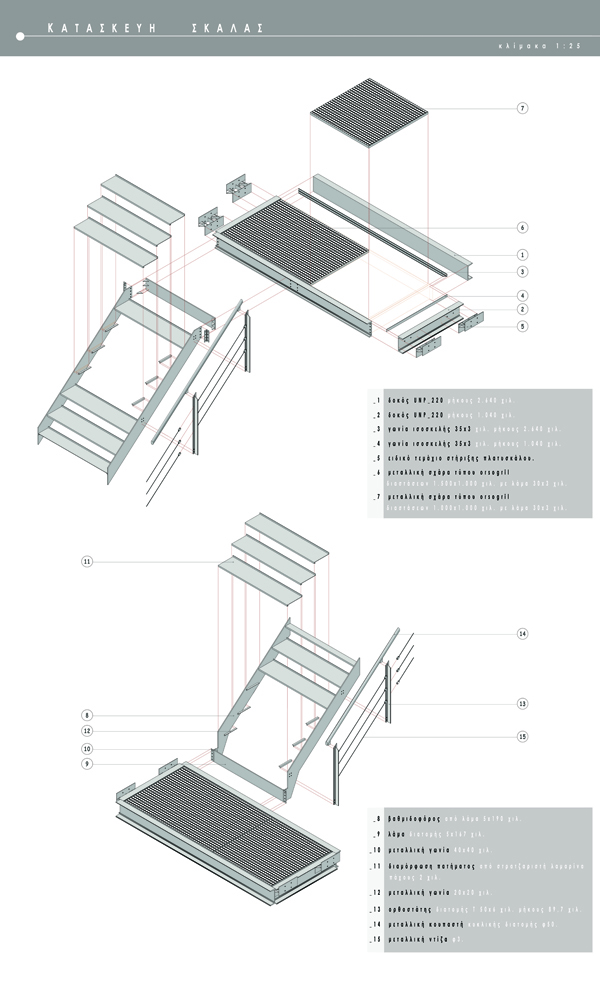
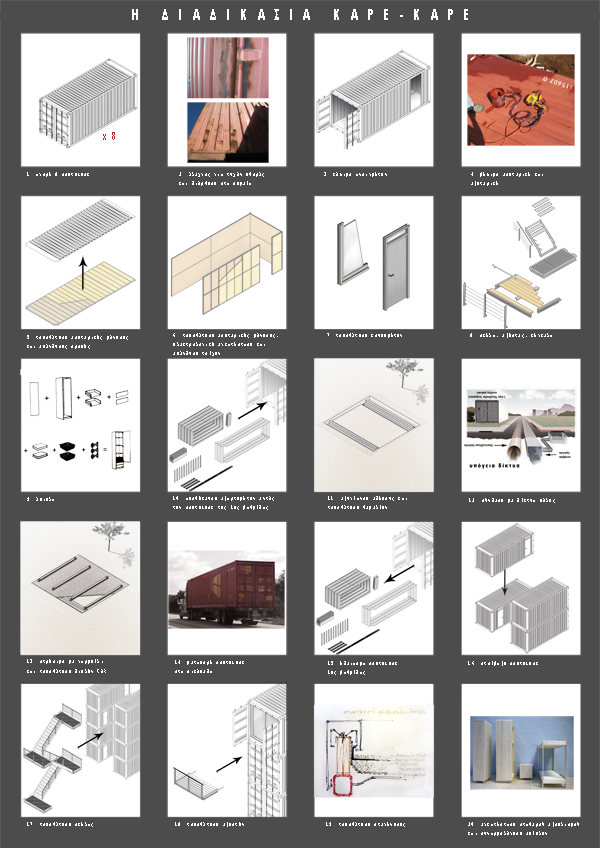
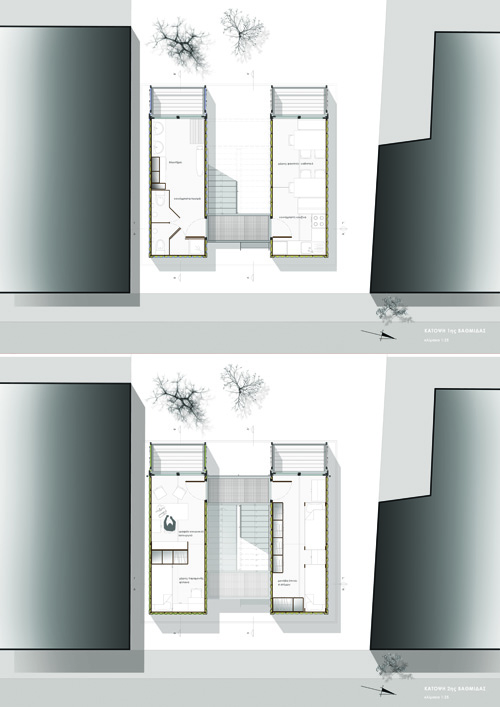
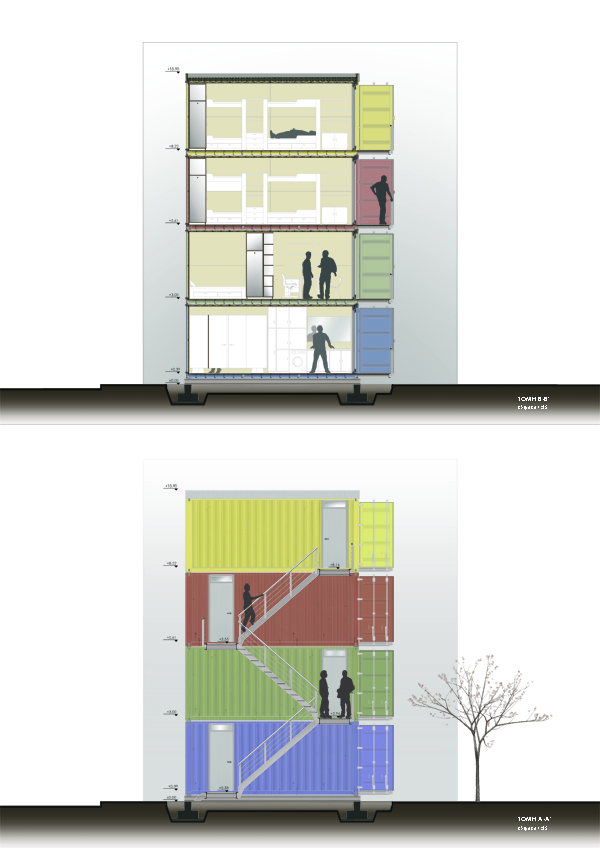
Aesthetic result
The global image of the container creates the viewing of specific associations. Although the architecture is placed in a specific location and are apparently stationary, it remains movable and transportable to some extent.
The block of containers as architecture is literal (almost a "foreign body") in addition to all other neighbor buildings. Aimed at people who - because of a different nationality and temporary or uncertain of their stay - think, feel and act differently than everyone else, but on the other hand they have to coexist with them since they are linked ("connected") with them. The construction manages to externalize their intentions clearly (ephemeral, economic), the characteristics and particularities of the users and the functions that satisfied in and around it.
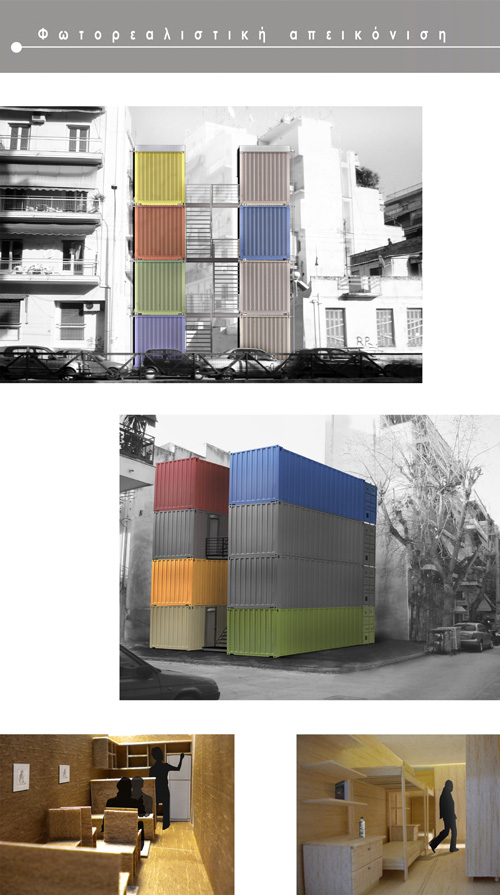
Finally, this proposal represent and express a research proposal to develop a new alternative treatment for corresponding issues.
Related articles:
- Theaterhaus Jena Inflatable Pavilion ( 25 September, 2009 )
- The Wall paper house offers cheap dry home for poor and displaced ( 10 February, 2009 )
- Norway-Powered by Nature ( 26 September, 2011 )
- Transportable unit of medical support for central Africa ( 02 February, 2011 )
- Beehive housing ( 30 October, 2010 )
- Time-Bank Local Complex ( 04 March, 2013 )
- Urban Camping. Athens ( 28 April, 2013 )
- b84 ( 15 October, 2013 )
- TV ( 22 January, 2014 )
- Multiplying the ''Joint'' ( 06 March, 2015 )
- Designing for the homeless ( 26 March, 2015 )
- T.E.F.K. House ( 30 March, 2015 )
